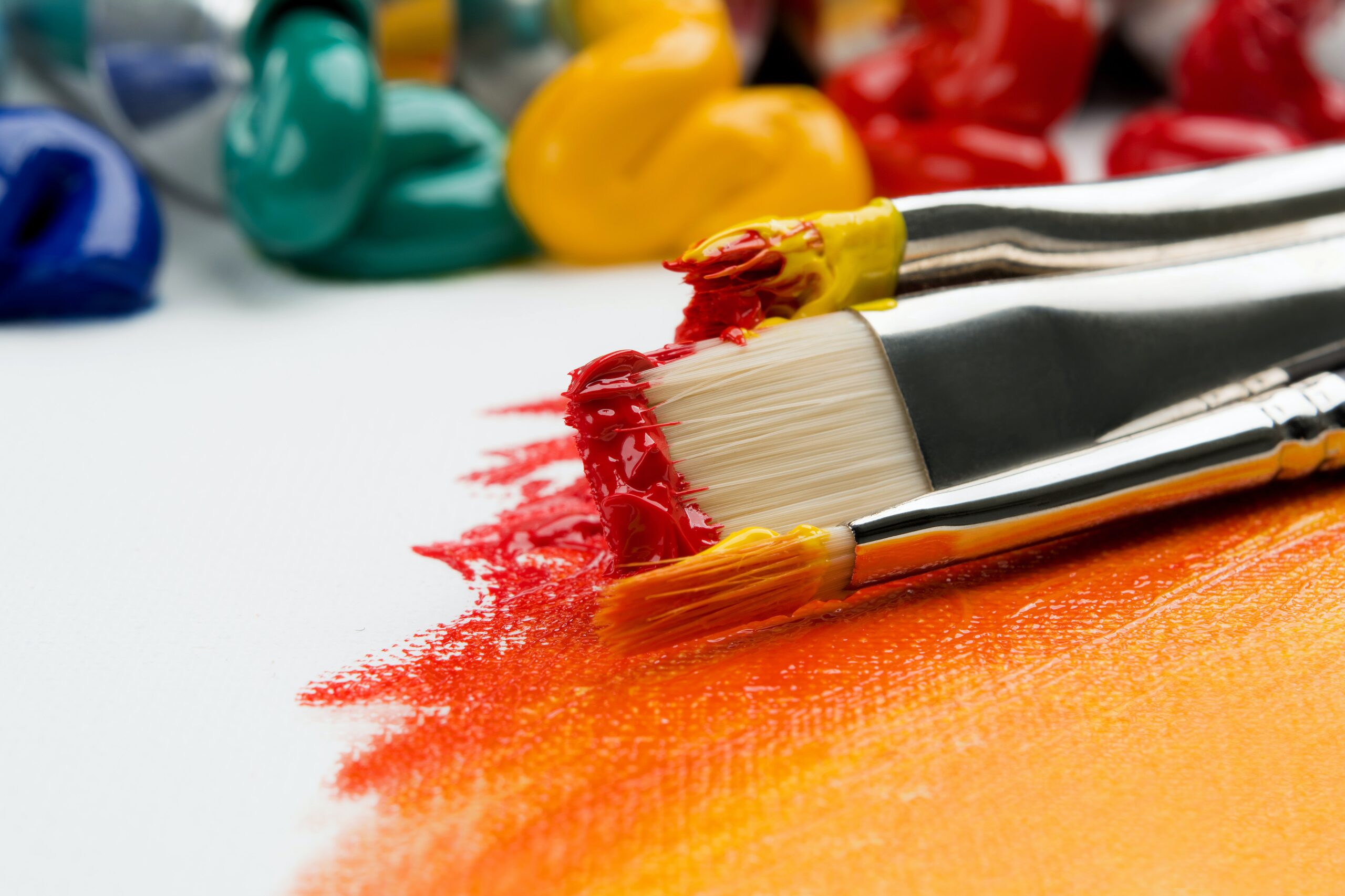Imagine you’ve just finished painting a beautiful design on a ceramic plate or mug, and now you’re wondering how to make sure that your artwork stays intact for years to come. Well, look no further! This article will guide you on how to bake acrylic paint on ceramic, ensuring that your masterpiece is not only stunning but also durable. Whether you’re a seasoned artist or just exploring your creativity, keep reading to discover the simple steps that will help you preserve your painted ceramics.

Materials Needed
To bake acrylic paint on ceramic, you’ll need a few basic materials. Here’s a list of what you’ll need:
Acrylic paint
Choose high-quality acrylic paint that is specifically designed for use on ceramics. This will ensure better adhesion and durability.
Ceramic object
Select the ceramic object you want to paint. It can be a mug, a plate, a vase, or any other ceramic piece you’d like to add some color to.
Clear gloss spray
A clear gloss spray will help protect the painted surface and give it a shiny finish. Look for a spray that is suitable for use on ceramics.
Paintbrush
You’ll need a good quality paintbrush to apply the acrylic paint onto the ceramic surface. Choose a brush with synthetic bristles for smooth and even application.
Oven
A conventional oven is required for the baking process. Make sure your oven is clean and in good working condition before you start.
Oven thermometer
An oven thermometer is necessary to ensure that the temperature inside the oven remains at the correct level throughout the baking process.
Baking sheet
A baking sheet will serve as a platform to place your ceramic object on during baking. Make sure it’s clean and large enough to accommodate your object.
Aluminum foil
Covering the baking sheet with aluminum foil will help prevent any potential drips or stains from the paint.
Timer
A reliable timer is needed to keep track of the baking time accurately.
Preparing the Ceramic Object
Before you begin painting, it’s essential to prepare the ceramic object properly. Follow these steps to ensure the best results:
Wash the ceramic object
Thoroughly clean the ceramic object using warm soapy water. This will remove any dirt, oils, or residues that could interfere with the paint adhesion.
Dry the ceramic object
After washing, make sure to completely dry the ceramic object. You can use a clean cloth or let it air dry naturally.
Sand the ceramic object
Lightly sand the surface of the ceramic object with fine-grit sandpaper. This step helps create a slightly rougher surface, allowing the acrylic paint to adhere better.
Applying Acrylic Paint
Once the ceramic object is prepared, it’s time to start painting. Follow these steps for a smooth and even application of acrylic paint:
Choose suitable acrylic paint
Select acrylic paint that is specifically formulated for use on ceramics. This type of paint will adhere better and provide a more durable finish.
Prepare the paint
Squeeze a small amount of acrylic paint onto a palette or a disposable plate. If necessary, dilute the paint with a few drops of water to achieve the desired consistency.
Apply the first coat
Using a paintbrush, apply a thin, even coat of acrylic paint to the ceramic object. Start from one side and work your way around, ensuring that the paint covers the entire surface.
Allow paint to dry
Let the first coat of paint dry completely before applying additional coats. It’s important to follow the drying time mentioned on the paint packaging.
Apply additional coats
Depending on the desired color intensity and coverage, you may need to apply multiple coats. Allow each coat to dry completely before applying the next one. This will help prevent any streaks or unevenness in the final result.
Baking Process
Once you’ve finished painting your ceramic object, it’s time to bake it. Follow these steps to ensure a successful baking process:
Preheat the oven
Start by preheating your oven to the temperature recommended by the acrylic paint manufacturer. This information can usually be found on the paint packaging or the manufacturer’s website.
Place the ceramic object on the baking sheet
Carefully place the painted ceramic object onto the clean baking sheet. Make sure it’s positioned in the center to allow for even heating.
Cover the baking sheet with aluminum foil
Cover the baking sheet with a layer of aluminum foil. This will protect both the ceramic object and the baking sheet from any potential drips or splatters of the paint during the baking process.
Place the baking sheet in the oven
Gently place the baking sheet with the ceramic object in the preheated oven. Make sure it’s positioned in the center rack for optimal heat distribution.
Monitor the oven temperature
Place an oven thermometer inside the oven to monitor the temperature accurately. This will help ensure that the oven remains at the correct temperature for the entire duration of the baking process.
Bake the ceramic object
Set the timer according to the baking time recommended by the acrylic paint manufacturer. It’s crucial to follow this time frame to avoid any damage to the ceramic object or the paint.
Remove the ceramic object from the oven
Once the baking time is complete, carefully remove the baking sheet from the oven. Use oven mitts or heat-resistant gloves to protect your hands from the heat.

Curing and Finishing
after the ceramic object has been baked, it’s time to cure and finish it. Follow these steps to complete the process:
Allow the ceramic object to cool
Before applying any final touches, allow the ceramic object to cool completely. This will prevent any potential damage or warping caused by sudden temperature changes.
Apply a clear gloss spray
Once the ceramic object is cool, you can apply a clear gloss spray to give it a protective and glossy finish. Follow the instructions on the spray can and apply an even, light coat.
Let the gloss spray dry
Allow the gloss spray to dry completely before handling or using the ceramic object. This will ensure that the finish is fully cured and won’t smudge or peel off.
Cure the ceramic object
To achieve maximum durability and longevity, it’s important to cure the ceramic object. This can be done by leaving it to air dry for a minimum of 21 days. During this curing period, avoid washing the ceramic object or exposing it to any excessive moisture.
Safety Precautions
When performing the process of baking acrylic paint on ceramic, it’s crucial to prioritize safety. Here are a few safety precautions to keep in mind:
Ensure proper ventilation
Open windows or turn on exhaust fans to ensure proper ventilation while baking the ceramic object. This will help dissipate any fumes that may be released during the baking process.
Avoid overheating the oven
Always follow the recommended baking temperature for the acrylic paint. Avoid setting the oven temperature higher than required, as this can lead to undesirable results or even damage to the ceramic object.
Avoid using food-related items in the oven
If you’re using acrylic paint to decorate ceramic objects like plates or mugs, it’s important to avoid using these items for food consumption. Even though the paint is baked on, it’s best to use them for decorative purposes only.
Take caution when handling heated objects
Always use oven mitts or heat-resistant gloves when handling the ceramic object or the baking sheet after it has been removed from the oven. They will protect your hands from burns or injuries caused by the heat.

Tips and Tricks
Here are some additional tips and tricks to help you achieve the best results when baking acrylic paint on ceramic:
Choose the right type of paint
Using paint specifically formulated for use on ceramics will give you the best results. It adheres better and provides a more durable finish compared to regular acrylic paint.
Experiment with different techniques
Don’t be afraid to get creative and experiment with different painting techniques. You can try sponging, layering, or even using stencils to create unique designs and patterns on your ceramic objects.
Clean your brushes properly
After each painting session, make sure to clean your brushes thoroughly. Rinse them with water and mild soap, then reshape the bristles and let them air dry. Proper brush maintenance will prolong their lifespan and ensure smooth application in future projects.
Test the paint and technique on a sample object
Before painting your actual ceramic object, it’s a good idea to practice on a sample object or a test surface. This will allow you to familiarize yourself with the paint and different techniques, ensuring better results when painting the final piece.
FAQs
Can acrylic paint be baked on ceramic?
Yes, acrylic paint can be baked on ceramic. When the painted ceramic object is correctly baked, it can achieve a durable and permanent bond.
What temperatures should I use to bake acrylic paint on ceramic?
The recommended baking temperature for acrylic paint on ceramic may vary depending on the specific brand or type of paint you’re using. It’s essential to follow the instructions provided by the manufacturer to achieve the best results.
Do I need to cure the painted ceramic object?
Curing the painted ceramic object is highly recommended for optimal durability. Curing involves allowing the object to air dry for a minimum of 21 days without washing or exposing it to moisture.
Can I wash the cured ceramic object?
Once the ceramic object has been cured, you can gently wash it by hand using mild soap and lukewarm water. Avoid using harsh scrub brushes or abrasive cleaners that can damage the painted surface.

Troubleshooting
If you encounter any issues during the process of baking acrylic paint on ceramic, here are some troubleshooting tips:
Paint peeling off
If the paint starts to peel off after baking, it could be due to inadequate surface preparation or using low-quality paint. Make sure to properly clean and sand the ceramic object before painting, and choose high-quality paint designed for use on ceramics.
Uneven paint application
Uneven paint application can be caused by various factors, such as improper brush techniques or using too much paint. Take your time and apply thin, even coats, allowing each coat to dry before adding another layer.
Paint discoloration
If the paint appears discolored after baking, it could be caused by overheating or using incompatible paint and gloss spray. Make sure to follow the recommended baking temperature and use a compatible gloss spray for the best results.
Conclusion
Baking acrylic paint on ceramic is a great way to add color and personality to your ceramic objects. By following the steps outlined in this article and taking the necessary safety precautions, you’ll be able to achieve beautiful and durable results. Don’t forget to experiment with techniques, choose the right materials, and enjoy the process of creating your own custom-painted ceramic pieces!




